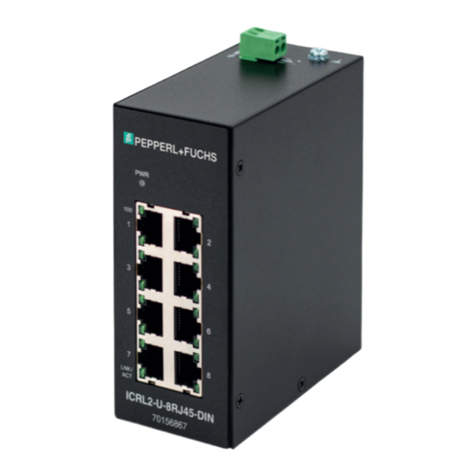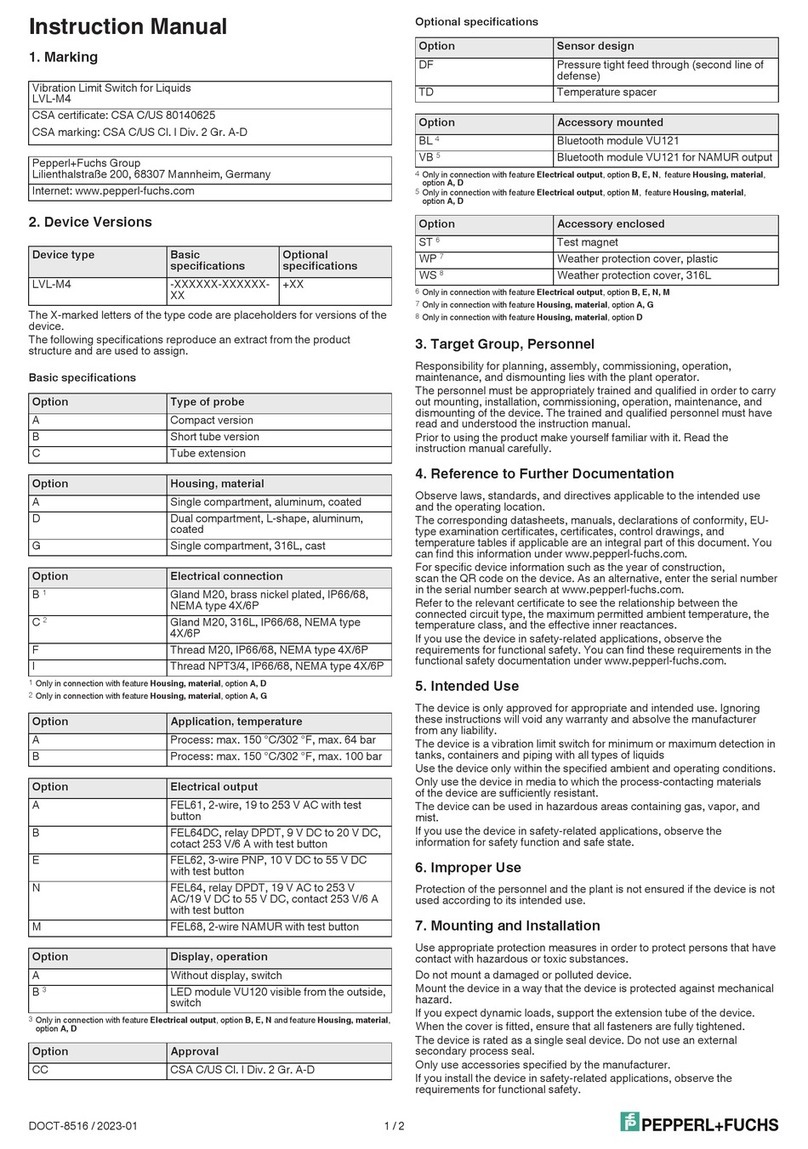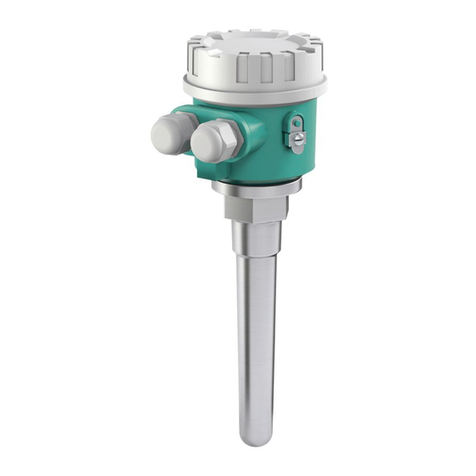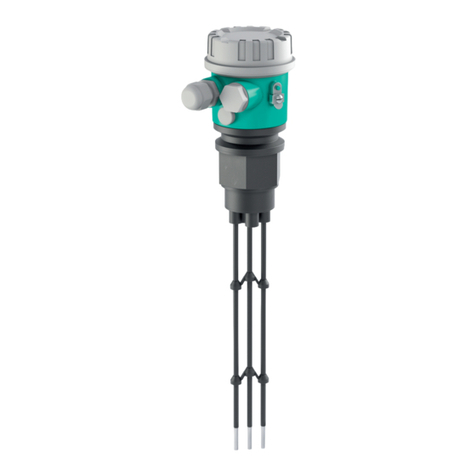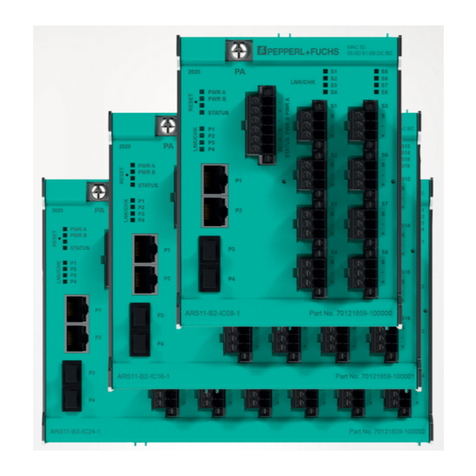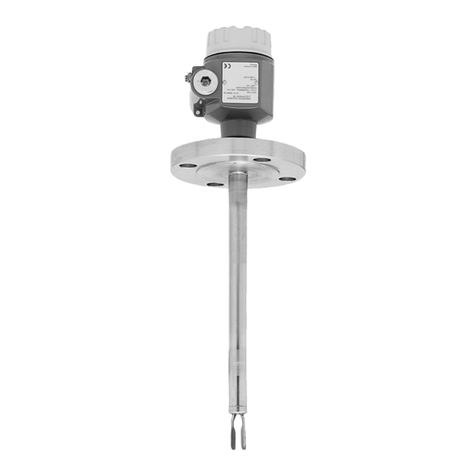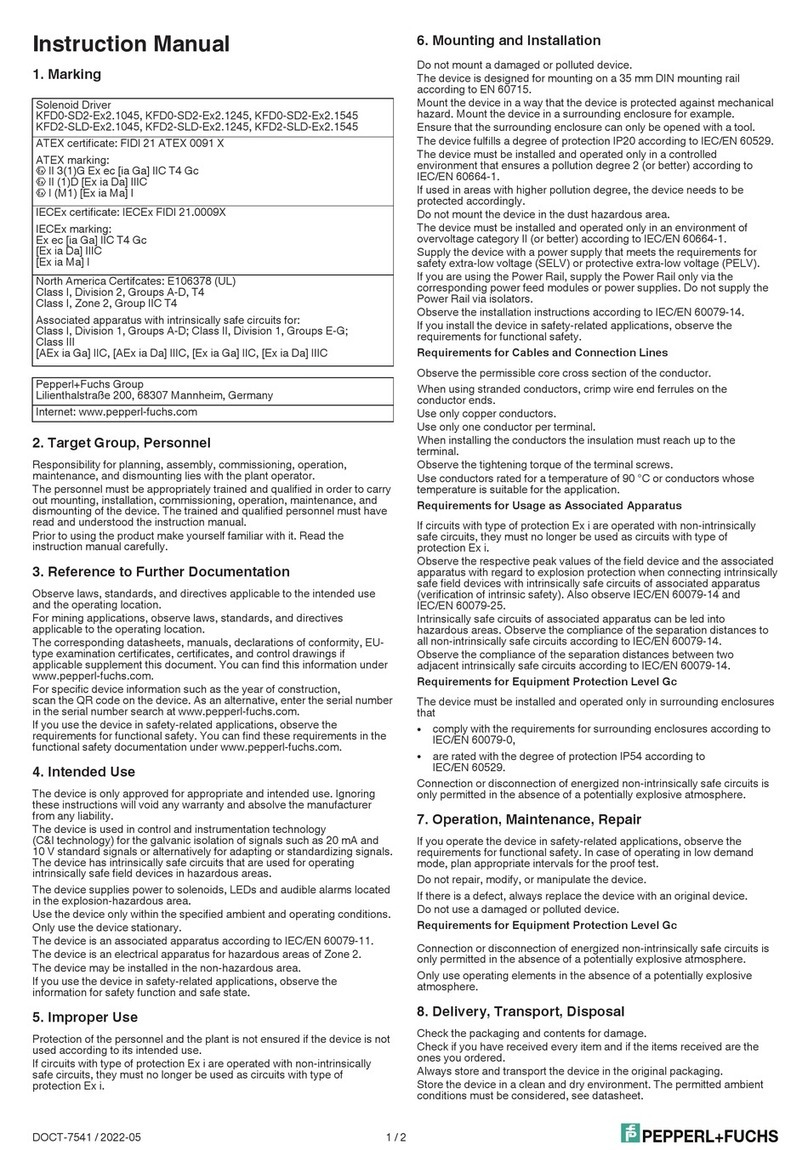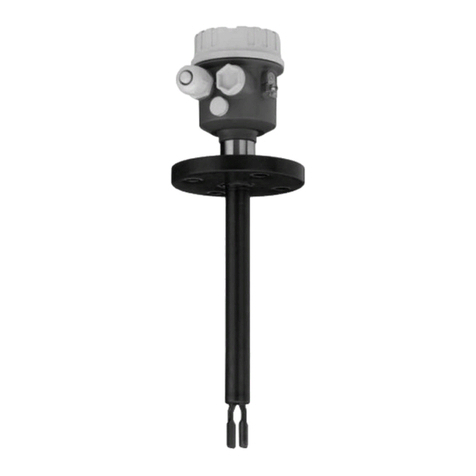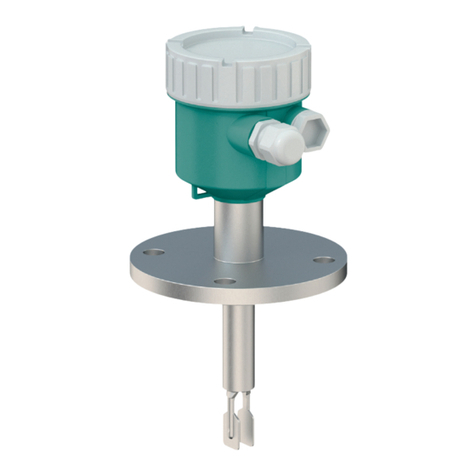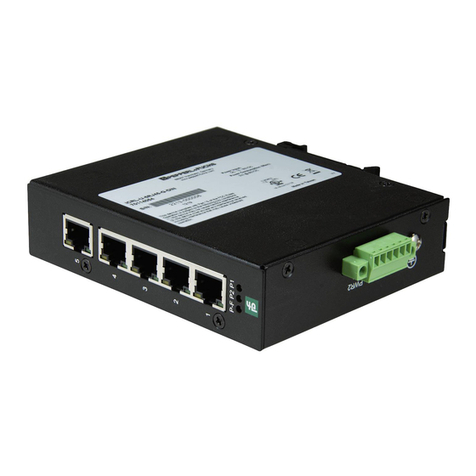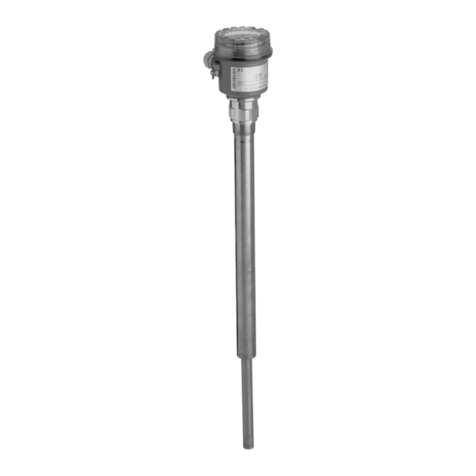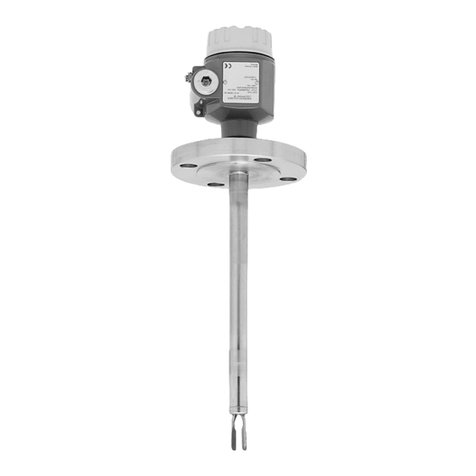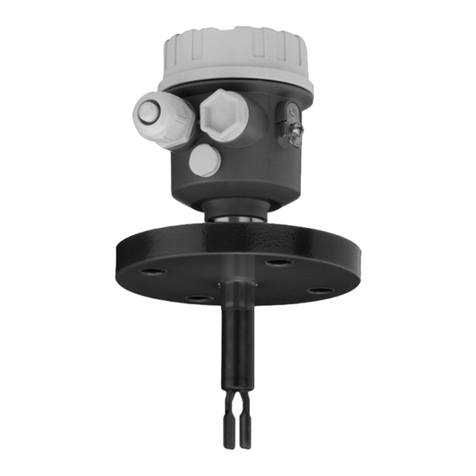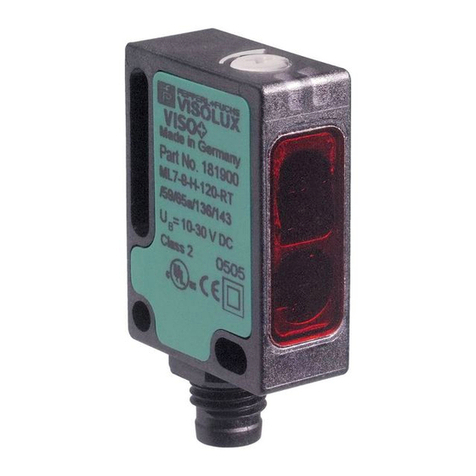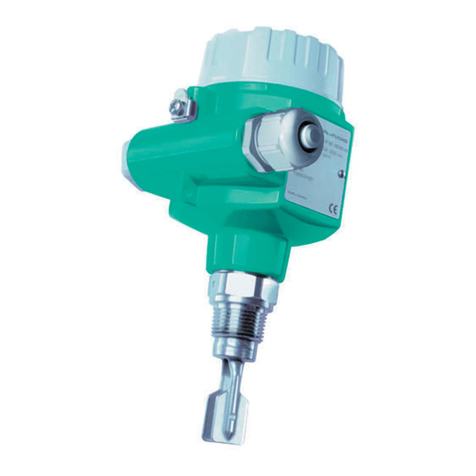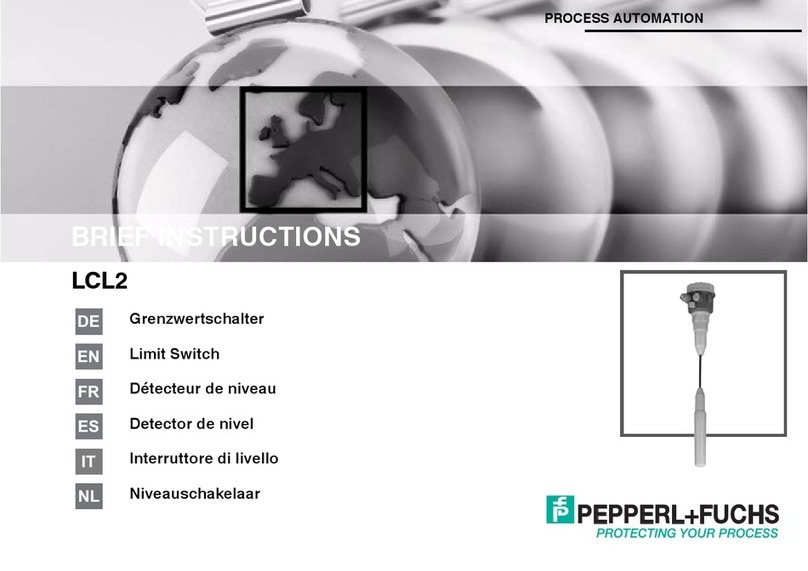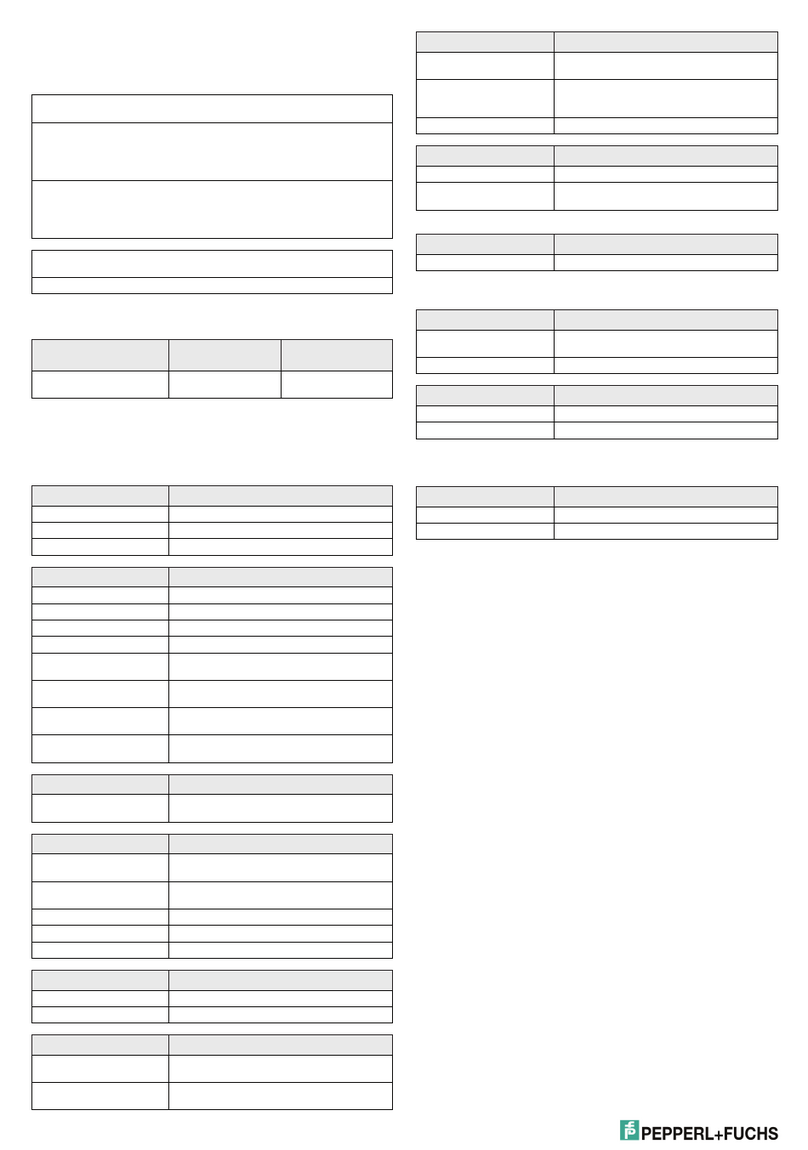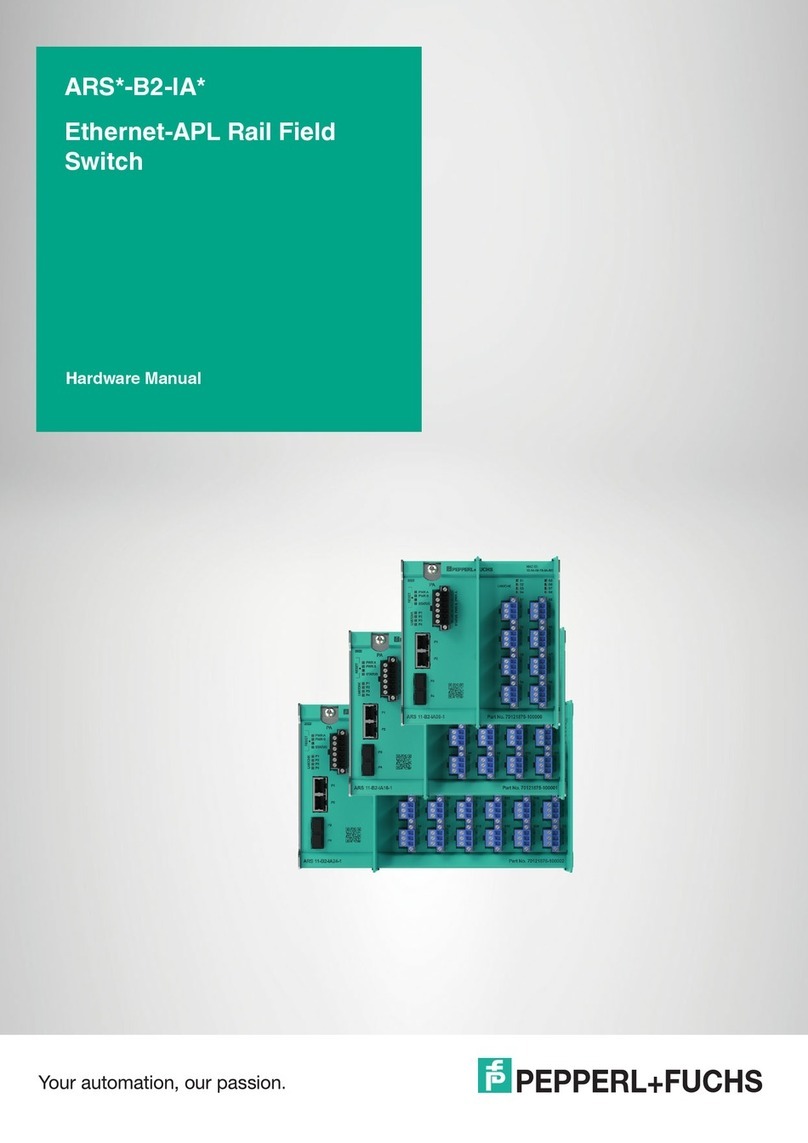
Instruction Manual
1. Marking
Vibration Limit Switch for Liquids
LVL-M4
ATEX certificate: CSANe 23ATEX1157X
ATEX marking:
1 II 1/2G Ex db IIC T6...T1 Ga/Gb
1 II 2G Ex db IIC T6...T1 Gb
1 II 1/2D Ex ta/tb IIIC Txxx°C Da/Db
1 II 2D Ex tb IIIC Txxx°C Db
IECEx certificate: IECEx CSAE 23.0044X
IECEx marking:
Ex db IIC T6...T1 Ga/Gb
Ex db IIC T6...T1 Gb
Ex ta/tb IIIC Txxx°C Da/Db
Ex tb IIIC Txxx°C Db
Pepperl+Fuchs Group
Lilienthalstraße 200, 68307 Mannheim, Germany
Internet: www.pepperl-fuchs.com
2. Device Versions
Device type Basic
specifications
Optional
specifications
LVL-M4 -XXXXXX-XXXXXX-
XX
+XX
The X-marked letters of the type code are placeholders for versions of the
device.
The following specifications reproduce an extract from the product
structure and are used to assign.
Basic specifications
Option Type of probe
A Compact version
B Short tube version
C Tube extension
Option Sensor length, material
A Compact version, Alloy C22
B Compact version, 316L
C Short tube version, Alloy C22
D Short tube version, 316L
E Tube extension, length L in mm, Alloy C22,
Ra < 3.2 μm/126 μinch
F Tube extension, length L in mm, 316L,
Ra < 3.2 μm/126 μinch
G Tube extension, length L in inch, Alloy C22,
Ra < 3.2 μm/126 μinch
H Tube extension, length L in inch, 316L,
Ra < 3.2 μm/126 μinch
Option Housing, material
A Single compartment, aluminum, coated
D Dual compartment, L-shape, aluminum,
coated
G Single compartment, 316L, cast
Option Electrical connection
F Thread M20, IP66/68, NEMA type 4X/6P
G 1Thread G1/2, IP66/68, NEMA type 4X/6P
I Thread NPT3/4, IP66/68, NEMA type 4X/6P
1 Reduction M20x1.5 to G1/2 enclosed
Option Application, temperature
A Process: max. 150 °C/302 °F, max. 64 bar
B Process: max. 150 °C/302 °F, max. 100 bar
Option Electrical output
A FEL61, 2-wire, 19 to 253 V AC with test
button
B FEL64DC, relay DPDT, 9 V DC to 20 V DC,
contact 253 V/6 A with test button
E FEL62, 3-wire PNP, 10 V DC to 55 V DC
with test button
N FEL64, relay DPDT, 19 V AC to 253 V
AC/19 V DC to 55 V DC, contact 253 V/6 A
with test button
M FEL68, 2-wire NAMUR with test button
Option Display, operation
A Without display, switch
B 2LED module VU120 visible from the outside,
switch
2 Only in connection with feature Electrical output, option B, E, N and feature Housing, material,
option A, D
Option Approval
ES ATEX/IEC II 1/2G, 2G Ex db IIC T6 Ga/Gb, II
1/2D, 2D Ex ta/tb IIIC Da/Db
Optional specifications
Option Test, certificate, declaration
U1 3Ambient temperature -50 °C/-58 °F
U2 3Ambient temperature -60 °C/-76 °F
3 Only in connection with feature Electrical output, option B, E, N, M and feature Display,
operation, option A
Option Sensor design
DF Pressure tight feed through (second line of
defense)
TD Temperature spacer
Option Accessory mounted
BL 4Bluetooth module VU121
VB 5Bluetooth module VU121 for NAMUR output
4 Only in connection with feature Electrical output, option A, B, E, N, feature Housing, material,
option A, D and feature Display, operation, option A
5 Only in connection with feature Electrical output, option M, feature Housing, material,
option A, D and feature Display, operation, option A
Option Accessory enclosed
ST 6Test magnet
WP 7Weather protection cover, plastic
WS 8Weather protection cover, 316L
6 Only in connection with feature Electrical output, option B, E, N, M
7 Only in connection with feature Housing, material, option A, G
8 Only in connection with feature Housing, material, option D
3. Target Group, Personnel
Responsibility for planning, assembly, commissioning, operation,
maintenance, and dismounting lies with the plant operator.
The personnel must be appropriately trained and qualified in order to carry
out mounting, installation, commissioning, operation, maintenance, and
dismounting of the device. The trained and qualified personnel must have
read and understood the instruction manual.
Prior to using the product make yourself familiar with it. Read the
instruction manual carefully.
4. Reference to Further Documentation
Observe directives, standards, and national laws applicable to the
intended use and the operating location.
The corresponding datasheets, manuals, declarations of conformity, EU-
type examination certificates, certificates, control drawings, and
temperature tables if applicable are an integral part of this document. You
can find this information under www.pepperl-fuchs.com.
For specific device information such as the year of construction,
scan the QR code on the device. As an alternative, enter the serial number
in the serial number search at www.pepperl-fuchs.com.
Refer to the relevant EU-type examination certificate to see the
relationship between the connected circuit type, the maximum permitted
ambient temperature, the temperature class, and the effective inner
reactances.
If you use the device in safety-related applications, observe the
requirements for functional safety. You can find these requirements in the
functional safety documentation under www.pepperl-fuchs.com.
DOCT-8396 / 2023-08 1 / 2
